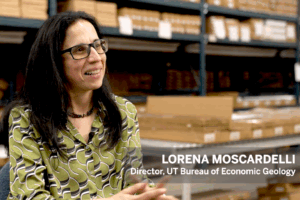Using advanced computer modeling and statistical analysis, a University of Texas at Austin linguistics professor has found that toddlers develop their own individual structures for using language that are very different from what we traditionally think of as grammar.
“Grammars have different forms in development,” says Colin Bannard, assistant professor in the Department of Linguistics. “We shouldn’t assume a child’s grammar is anything like our traditional notion of what grammar is.”
In a study released today in the journal Proceedings of the National Academy of Sciences, Bannard and Elena Lieven and Michael Tomasello, two colleagues working at the Max Planck Institute for Evolutionary Anthropology in Leipzig, Germany, developed a computer program to analyze 60 hours worth of conversations that two English-speaking toddlers–Brian and Annie–had with their parents after turning two and again after turning three.
The computer model did not assume the children knew any of the basic rules of language, such as the use of nouns and verbs. Instead, it used the toddlers’ early conversations after each birthday to predict the structure of their subsequent conversations.
Rather than adhering to the kinds of rules for English linguists have identified, the toddlers developed their own basic formulas for speaking with slots into which they could put particular kinds of words. At age two, those formulas–which were different for each child–were found to predict the children’s subsequent speech better than a more traditional grammar.
Many researchers have long believed that even young children’s earliest language derives from an understanding of an abstract grammar that includes categories like nouns and verbs and a set of rules for combining them to produce sentences.
“How exactly a child learned these was considered something of a mystery and so it was declared by some that they must be innate,” Bannard says. “However there is increasing evidence that children’s path to grammar is a gradual and piecemeal process.”
The findings also show that, between the ages of two and three, children learn to better understand and apply the adult rules of grammar, particularly by using verbs more flexibly.
This is the first major study of children’s language development that uses advanced computer modeling to analyze, understand and predict children’s utterances based on daily recordings of their language use.
“One thing that is very important about this work is Dr. Bannard’s sophisticated use of computational and statistical techniques to analyze child language data,” says Richard P. Meier, chair of the Linguistics Department.
Bannard hopes to use such methods more extensively.
“Here we have a technique for modeling grammar I’d like to apply to more children, to look at them more continuously from age two to age three, to apply rigorous statistics to learn what a child knows,” Bannard says.



